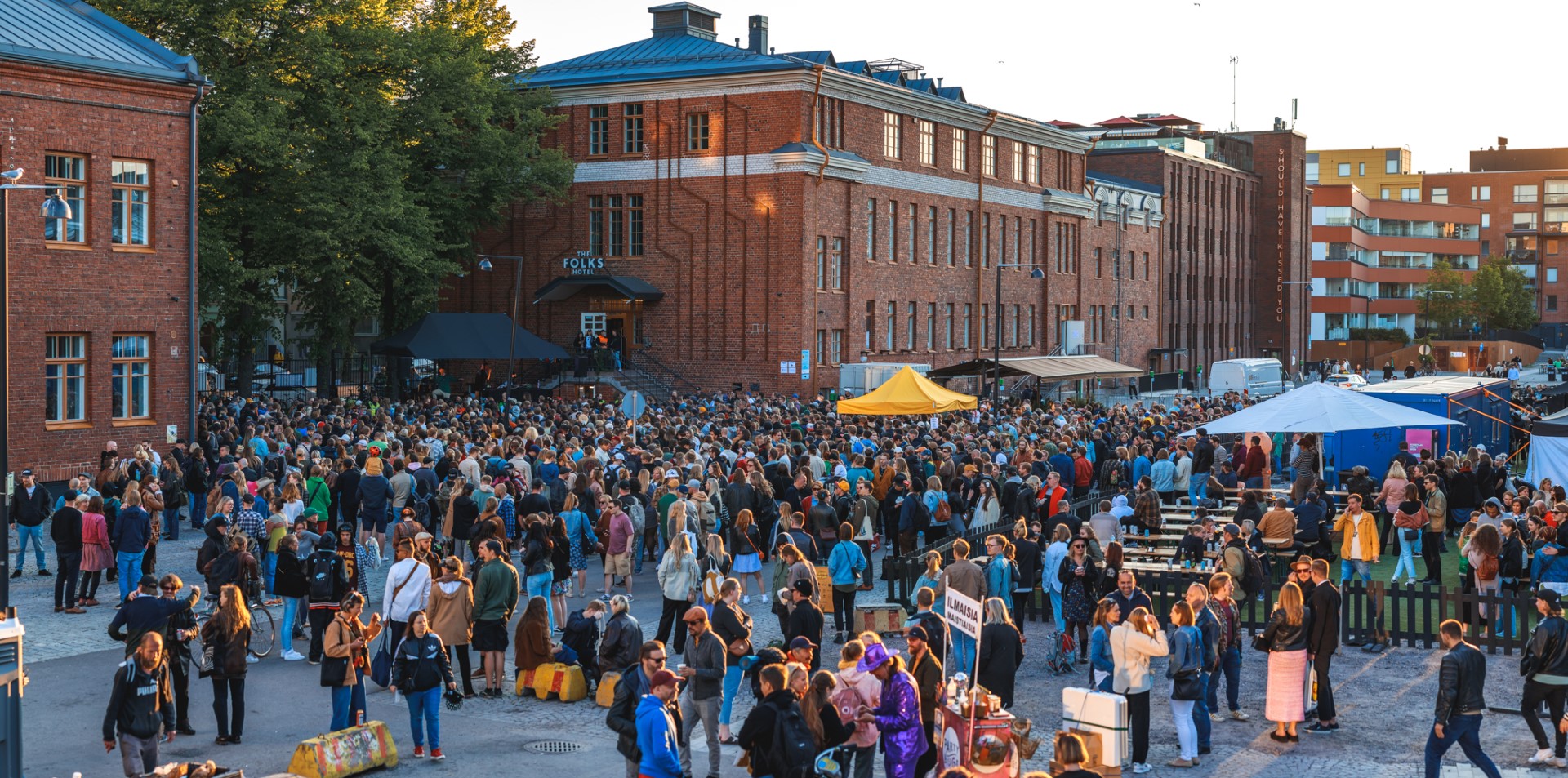Konepaja Area
Vallila of Helsinki, former outskirt, nowadays a center of urban life invites you to experience the city in a whole new way. Vallilan Konepaja, once an industrial neighborhood, is now a focal point for trendy and modern restaurants and bars. Right in the heart of this dynamic area is The Folks Hotel Konepaja.

History of Konepaja
Pasilan Konepaja is about 3 kilometers from the city center of Helsinki, in a valley between Alppiharju and Vallila. The borders of this area of 16 hectares are formed by Teollisuuskatu, Savonkatu, Aleksis Kiven katu and Sturenkatu.
The decision to situate the new Fredriksbergs (Pasilan) Konepaja outside the city, next to Sörnäinen harbor railways was made in 1898. The construction work began in 1899 and the actual Konepaja (translates as an engineering shop) started operating in 1903. A major part of the operations from the Konepaja of Helsinki city center was transferred to new spaces. The production of locomotives stayed at the old Konepaja, for which reason a curved locomotive depot, typical to depots, was not built.
Pasilan Konepaja became the largest of all VR’s, (Valtion Rautatiet ie Finnish National Railways) machine shops. In 1971 there were more than 900 employees. The mass production started between the wars, and in 1938 there were already over 1100 employees. From the end of the 1950s until the early 1960s Pasilan Konepaja was the largest engineering shop ever in the area, having more than 1500 employees.
Nation-wise Pasilan Konepaja is a remarkable industrial and cultural area. The distinctive industrial architecture style by Bruno F. Granholm forms a uniquely cohesive and large milieu in Pasila.
Pasilan Konepaja by VR was in the operational mode for about 100 years. When the decision to build it was made, in 1898, its location by the Sörnäinen railway was basically in the outskirts of the city. Nowadays Konepaja is an essential part of the quickly changing and intensifying downtown of Helsinki, wherein industrial, harbor, and institutional areas are systematically being changed into the use of urbanization, business and culture.
The decision to shut down Pasilan Konepaja was made in 1992 and it was last seen in full function in late 2002, early 2003. There used to be Pasila Konepaja’s office, diner, and a school in the current buildings of The Folks Hotel Konepaja.

